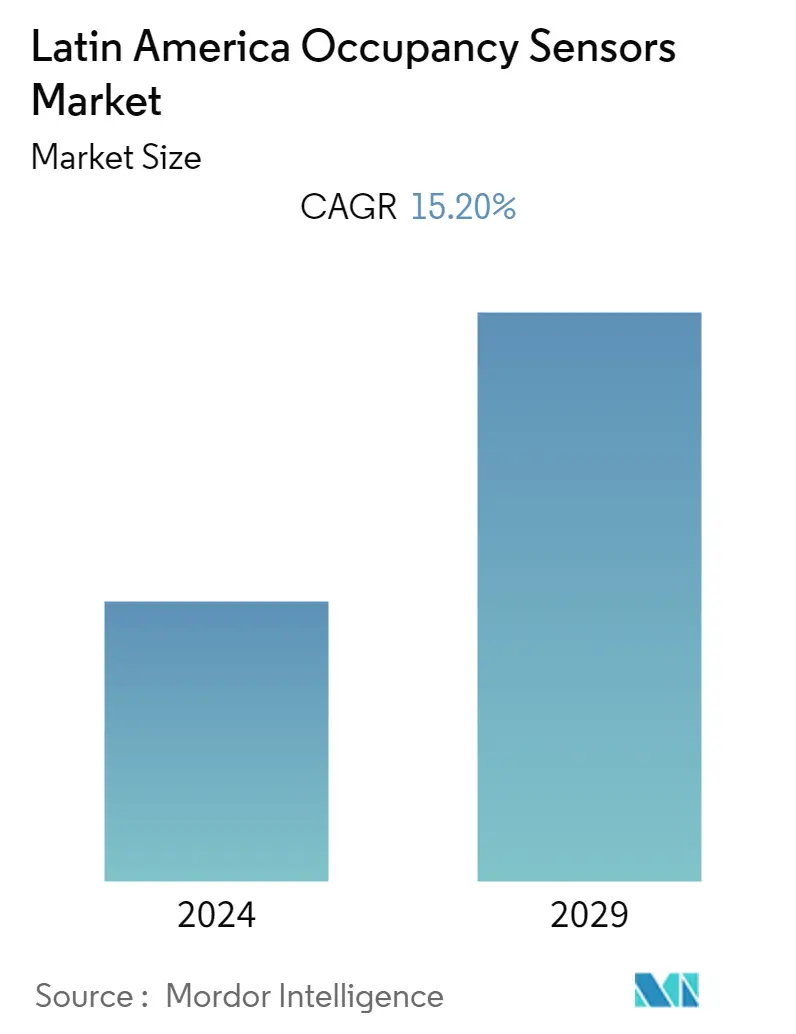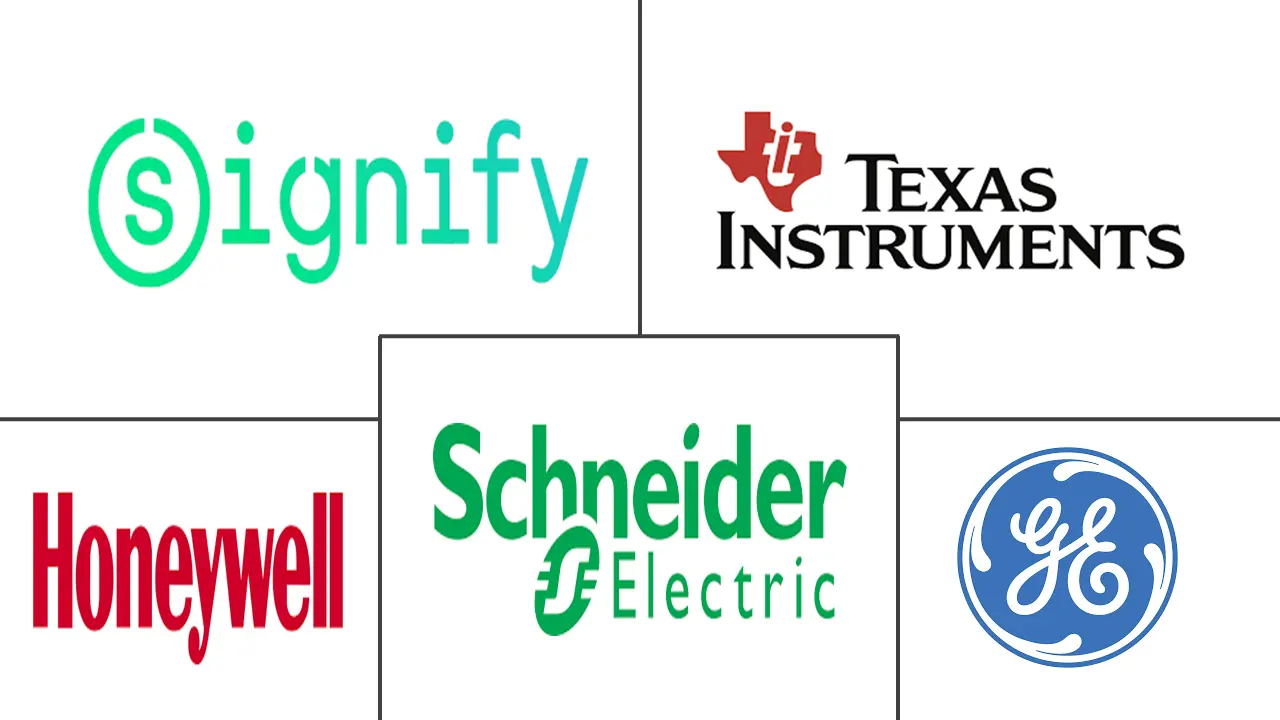Market Size of Latin America Occupancy Sensors Industry

| Study Period | 2019 - 2029 |
| Base Year For Estimation | 2023 |
| Forecast Data Period | 2024 - 2029 |
| Historical Data Period | 2019 - 2022 |
| CAGR | 15.20 % |
| Market Concentration | Medium |
Major Players
*Disclaimer: Major Players sorted in no particular order |
Need a report that reflects how COVID-19 has impacted this market and its growth?
Latin America Occupancy Sensors Market Analysis
The Latin America Occupancy Sensors Market is expected to register a CAGR of 15.2% during the forecast period, 2021-2026. Smart building technology and occupancy sensors can provide real-time data, allowing to make better decisions for building management under the new guidelines of COVID-19. Whether saving space or improving hygiene, occupancy IoT sensors can help mobilize and optimize the back-to-work process in the region.
- The rising demand for energy-efficient devices is expected to drive the region. Occupancy sensors play a vital role in reducing energy consumption. This is achieved through the sensors, which shut down devices and other equipment based on occupancy. These sensors help reduce light pollution and can be used for indoor and outdoor spaces.
- Further, to reduce energy waste, most energy codes require some method of automatically turning off lights when they are not in use, either on a schedule or based on occupancy. Occupancy sensors are lighting controls that turn off lights in unoccupied areas, lowering energy costs by reducing energy waste. Also, various vendors in the region are introducing Ultrasonic sensors to detect the presence of people by emitting ultrasonic sound waves into the environment and measuring the speed with which they return.
- Also, there is an increasing focus on Dual-technology sensors that use both passive infrared and ultrasonic technologies to detect the presence of occupants and activate the lights only when both technologies detect the presence of occupants. This configuration virtually eliminates the possibility of false-on problems, and requiring either technology to keep the lights on significantly reduces the possibility of false-off problems.
- Occupancy sensors have primarily been used to detect motion rather than the presence or other more essential occupancy features, including count, location, track, and identity. Also, New technology is expanding rapidly to detect higher-value features of occupancy.
